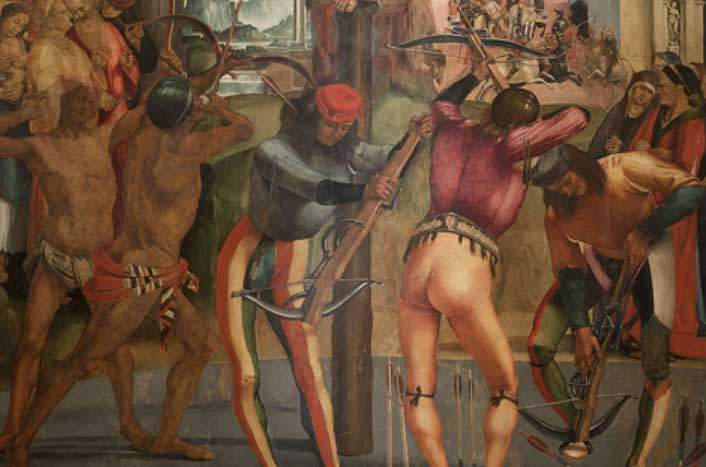Rome's Capitoline Museums devote an exhibition to Luca Signorelli, with about sixty works
As the five-hundredth anniversary of Raphael’s death approaches, the Capitoline Museums pay tribute to one of the greatest artists of the Renaissance, Tuscan painter Luca Signorelli (Cortona, c. 1450 - 1523), with the exhibition Luca Signorelli and Rome. Oblivion and Rediscovery running from July 18 to November 3, 2019. For the first time in Rome , therefore, an exhibition is dedicated to this important protagonist of the late 15th century, who was also capable of providing cues to Michelangelo (Caprese, 1475 - Rome, 1564) and Raphael himself (Urbino, 1483 - Rome, 1520), who were inspired by Signorelli to reach that unsurpassable summit of painting that his own contemporaries attributed to him. In fact, as Giorgio Vasari wrote, Luca Signorelli “was in his own time held in Italy so famous and his works in such esteem, as no other in any time has ever been before.”
Through a selection of about sixty highly prestigious works from Italian and foreign collections, many of which are being exhibited in Rome for the first time, the exhibition aims to highlight the historical and artistic context in which the artist’s first Roman sojourn took place and to offer new readings on the direct and indirect link that was established between the artist and Rome.
The itinerary is organized into seven sections and starts with an introduction on Vasari’s error of the artist’s true face, represented in the two different guises by the Busts made by Pietro Tenerani(Museum of Rome) and Pietro Pierantoni (Capitoline Museums, Protomoteca). Visitors are then taken to the Rome of Pope Sixtus IV, among the Capitoline antiquities, and in front of some of Signorelli’s works in which monuments, Christian antiquities, and classical statuary observed in Rome are revived or evoked, such as the Martyrdom of Saint Sebastian(Pinacoteca Comunale di Città di Castello), Christ on the Cross and Mary Magdalene(Uffizi Gallery), the Munich tondo, and the Arcevia altarpiece.
The tour continues inside Orvieto’s Cappella Nova, reconstructed through an interplay of backlit reproductions, to arrive in front of some of his masterpieces on the theme of grace and maternal love, including the Virgin and Child from the Metropolitan Museum of Art in New York and the precious panel owned by Princess Pallavicini. This is followed by sections devoted to Signorelli’s stay in Rome under Pope Leo X (1513-1521) and his relations with Bramante and Michelangelo.
To conclude the tour, a chapter is devoted to the rediscovery of the Master between the 19th and 20th centuries in art, literature and the antiques market, with the Flagellation(Galleria Giorgio Franchetti at Ca’ d’Oro, Venice) and the Madonna and Child among Four Saints and Angels(National Museum of Castel Sant’Angelo).
For all information you can visit the official website of the Capitoline Museums.
Pictured: Luca Signorelli, Martyrdom of Saint Sebastian, detail (c. 1498; oil on panel; Città di Castello, Pinacoteca Comunale)
 |
| Rome's Capitoline Museums devote an exhibition to Luca Signorelli, with about sixty works |
Warning: the translation into English of the original Italian article was created using automatic tools. We undertake to review all articles, but we do not guarantee the total absence of inaccuracies in the translation due to the program. You can find the original by clicking on the ITA button. If you find any mistake,please contact us.





























